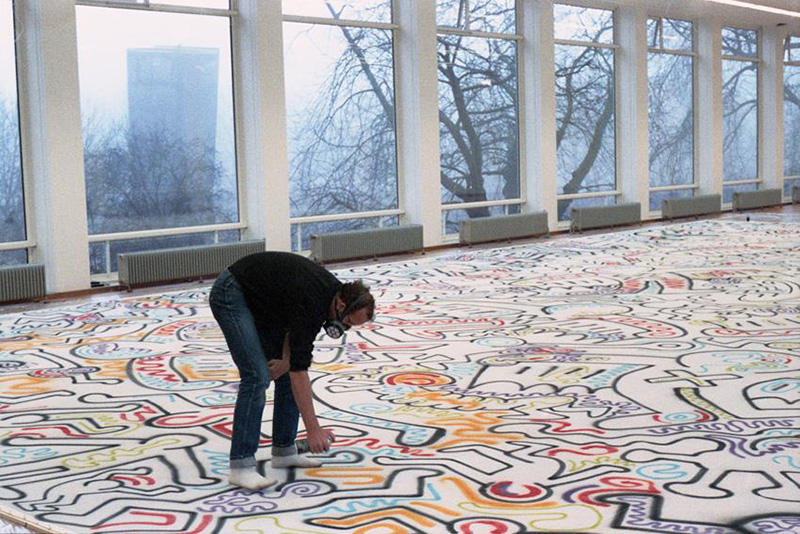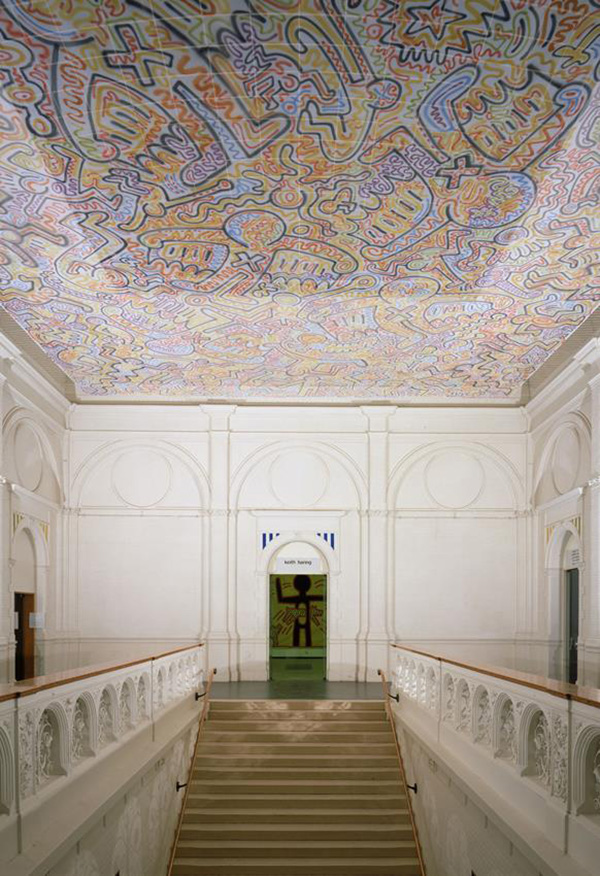ART-PRESENTATION: Keith Haring
 Keith Haring was an artist and social activist responding to New York City’s street culture of the ‘80s. His work is about birth, death, sex and war. Keith Haring was openly gay at a time when most non-heterosexuals kept their sexual proclivities behind closed doors. Part of Haring’s importance as an artist was how his art raised awareness of AIDS. Many of his works were featured in the Red Hot Organization’s efforts to raise money for AIDS research and AIDS awareness.
Keith Haring was an artist and social activist responding to New York City’s street culture of the ‘80s. His work is about birth, death, sex and war. Keith Haring was openly gay at a time when most non-heterosexuals kept their sexual proclivities behind closed doors. Part of Haring’s importance as an artist was how his art raised awareness of AIDS. Many of his works were featured in the Red Hot Organization’s efforts to raise money for AIDS research and AIDS awareness.
By Efi Michalarou
Photo: Stedelijk Museum Archive
Today the “Velum” (1986) by Keith Haring is on display again at Stedelijk Museum. For one of his first European exhibitions was his solo exhibition in 1986 at the Stedelijk Museum, Keith Haring didn’t simply want to present artwork he’d already made, he insisted on making new work. Laying out the velum, which measures almost 12 x 20 meter on the floor of one of the museum galleries, he painted it in just one day, using spray paint. Haring turned the event into an energy-fueled performance, he painted rapidly and rhythmically, moving over the canvas, hip-hop playing in the background. He filled the canvas with dancing, waving figures, crawling babies and squirming animals. Known as the “Keith Haring velum” (1986) the painting was stretched below the monumental glass cupola above the historic staircase. During this period, Haring also took part in activities outside the museum, in the city of Amsterdam. With the city as his canvas, he joined young graffiti artists, and produced artworks, including a mural on the facade of the former Stedelijk storage depot on the Jan van Galenstraat, painted while working from a crane. This is Haring’s largest surviving public artwork in Europe and consists of a single thick, white line. Drawing and painting murals in public locations, Haring was often philosophical about his approach to creating artwork, and was amazed and inspired by the interaction and feedback he would get from people around him. Although he was young, he had developed a very specific concept of what art should represent, and the ideology carried over through his work would leave an everlasting effect on the street culture in New York City, as well as art as a whole. Along with Jean-Michel Basquiat, Kenny Scharf, Futura 2000 and Richard Hambleton, among others, he was part of the young, up-and-coming group of the American artists who challenged art’s old perceptions.
Info: Stedelijk Museum, Museumplein 10, Amsterdam, Days & Hours: Mon-Thu & Sat-Sun 10:00-18:00, Fri 10:00-22:00, http://stedelijk.nl

